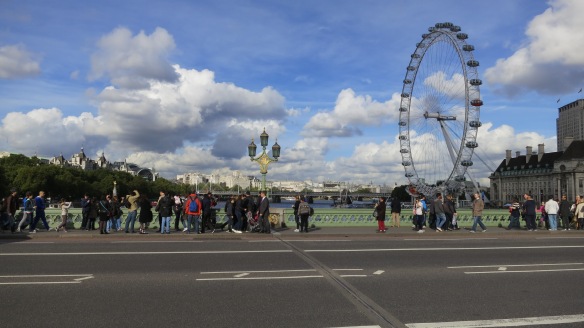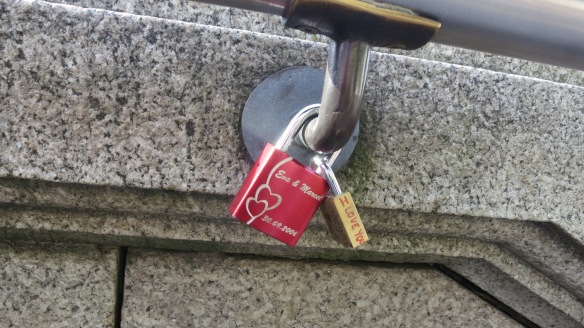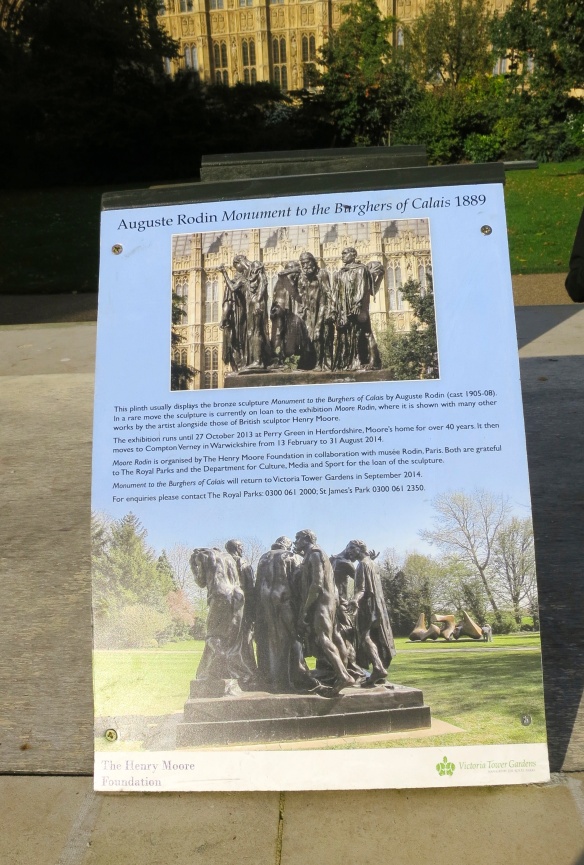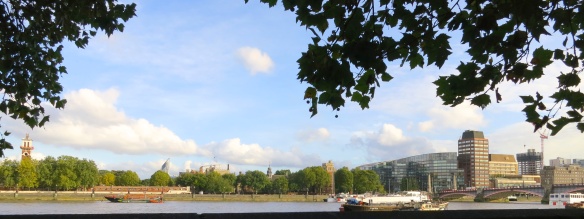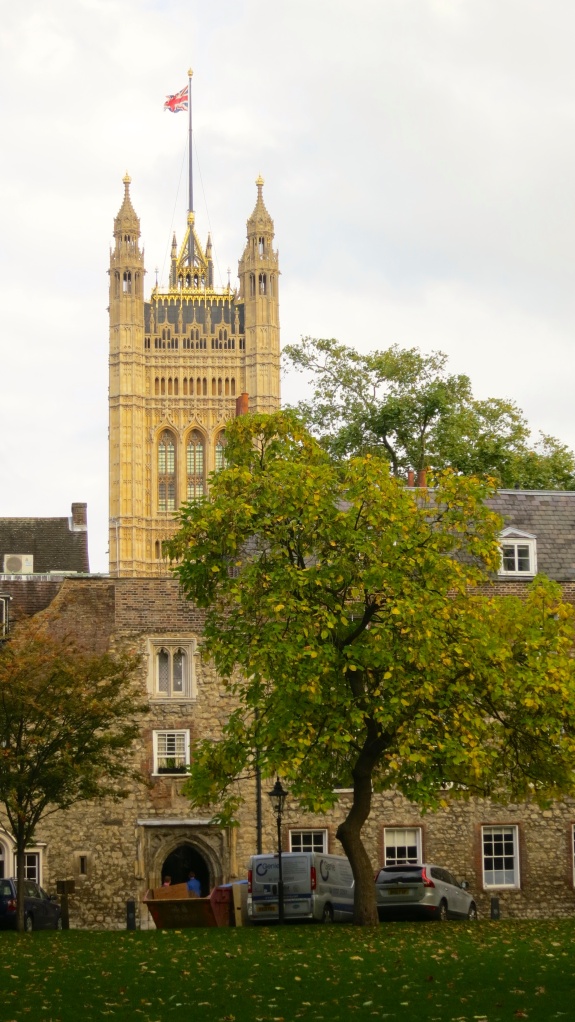Jackie and I began the day with a trip to Ferndene Farm shop for more gravel, for the patio corner and the path completed a couple of days ago that I am freshening up. We didn’t quite have enough for both, but I think you will get the picture.
A few more flowers were planted in the area cleared yesterday, including some Japanese anemones moved from the gravelled platform.
After this my chauffeuse drove me to New Milton for my trip to London.
From Waterloo I took the Westminster Bridge route to Carol’s in Rochester Row.
Despite the dull day, the South Bank was so crowded as to be almost impassable. The lovelocks, which have become a menace in so many major cities, have been removed from the handrails beside the steps up to the bridge.
Everywhere, as usual, cameras and mobile phones were brandished in the direction of the targeted sights.
The piper had his customary entourage of visitors recording his image. One beautifully smiling young woman took direction from her male photographer crouching low on the ground guiding her positioning of her hand for a shot in which she was to be seen supporting Big Ben.
On leaving Carol’s, I travelled by the Circle Line from St James’s Park to Edgware Road tube station from where I walked to the Akash restaurant for an enjoyable time and meal with my friend Jessie. This gave me an opportunity to exchange greetings with other friends from my favourite Bangladeshi establishment.
On the train I finished reading Desmond Seward’s history of ‘The Wars of the Roses’. From the very first paragraph of the author’s introduction we are dramatically drawn into this description of the fickle family feuds over the throne of England that occupied the country during the last decades of the fifteenth century. The maps, chronology, who’s who, and dynastic family trees that supplement the well researched and lively text make a good job of unravelling the story. I only wish I could hope to remember it all.
I moved on to Victoria’s Park, a novel by B. J. Haynes.
Jackie met me at New Milton station and drove me home.




